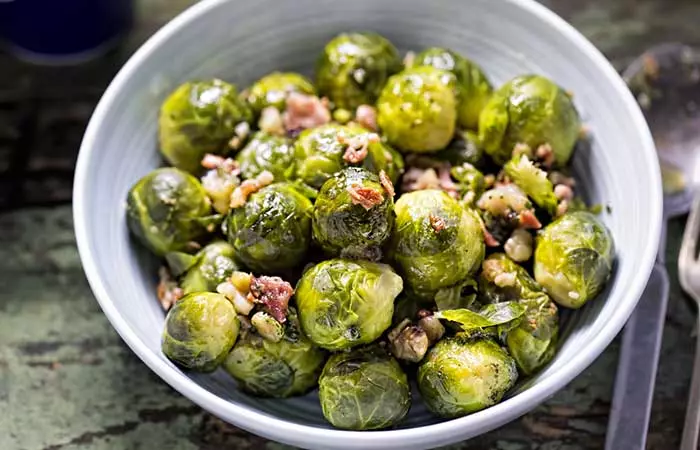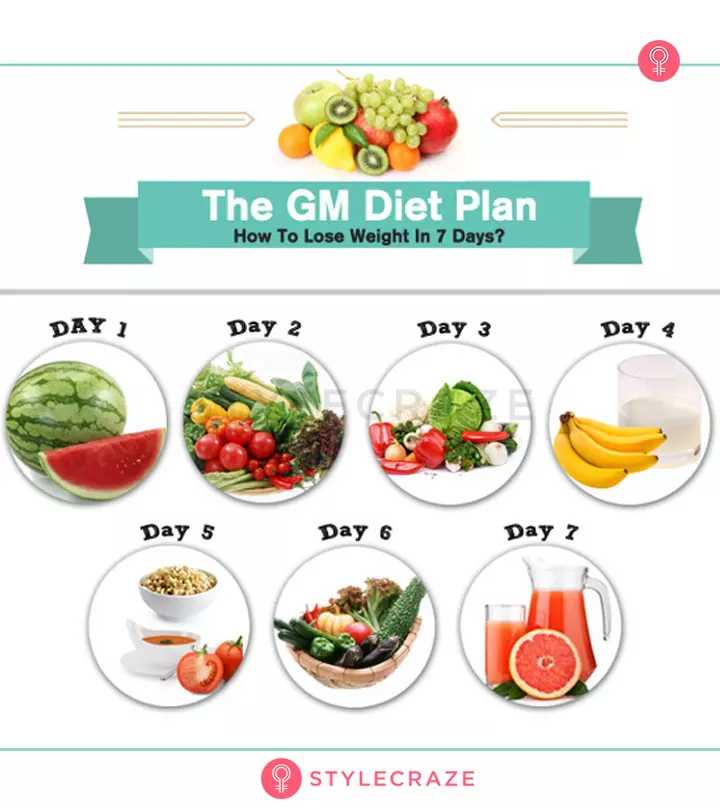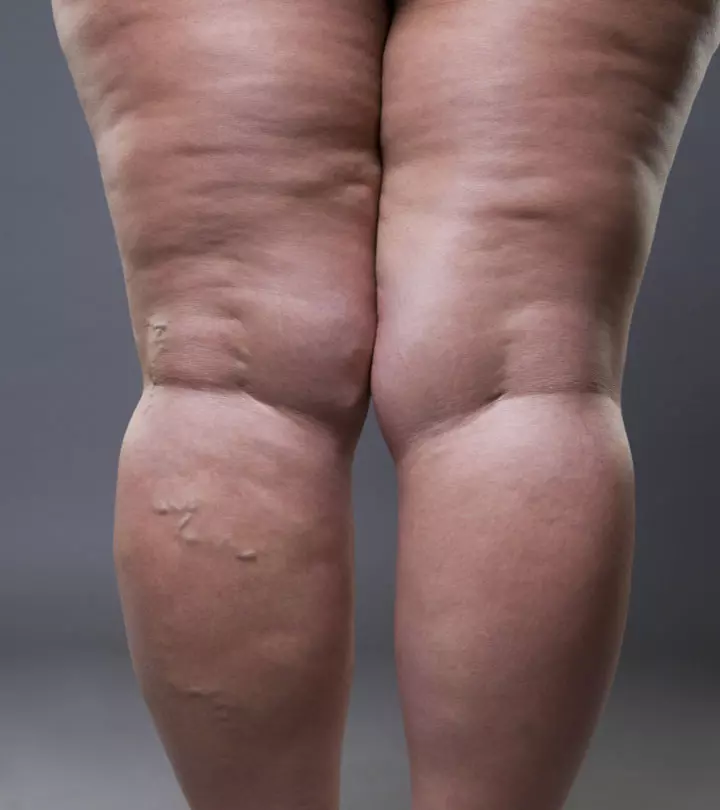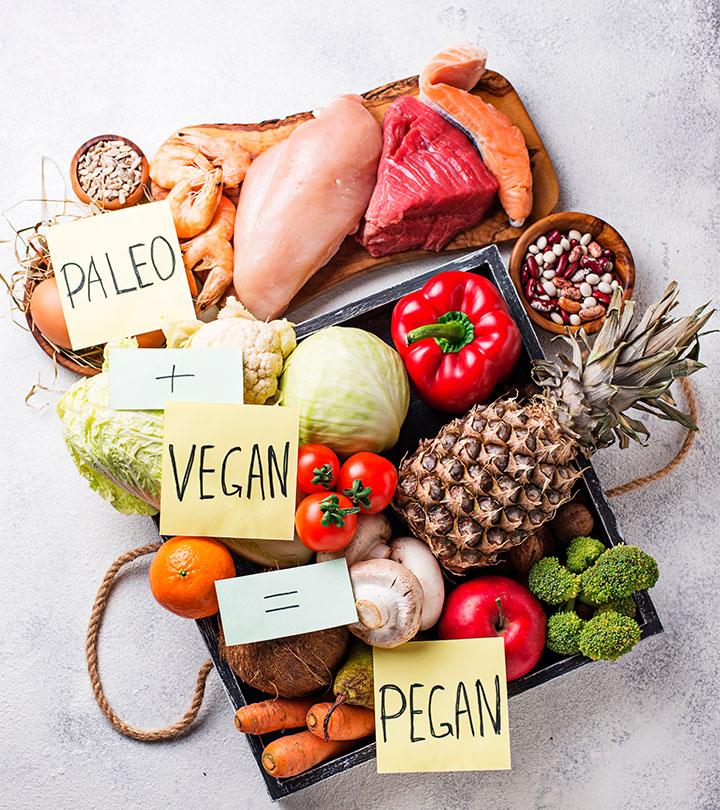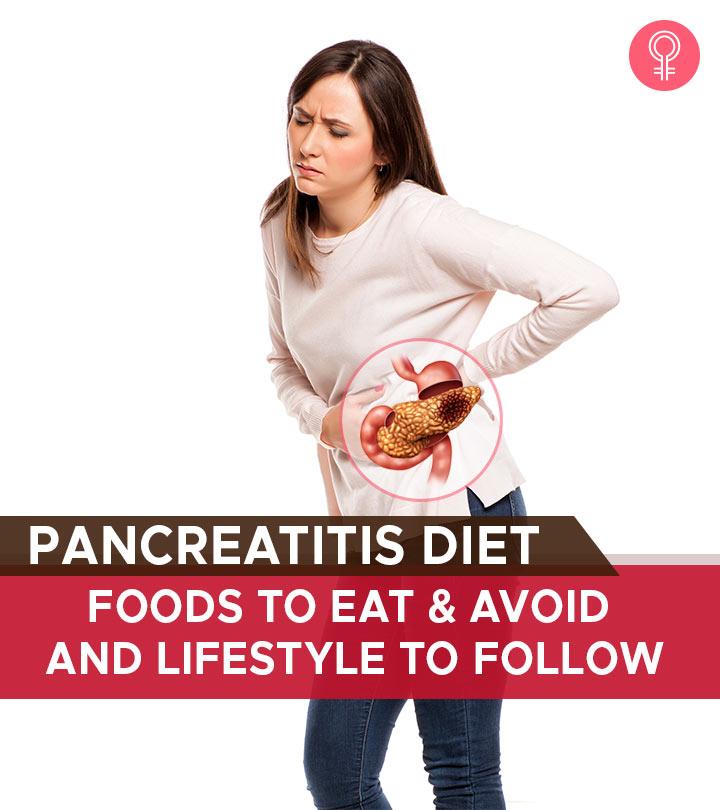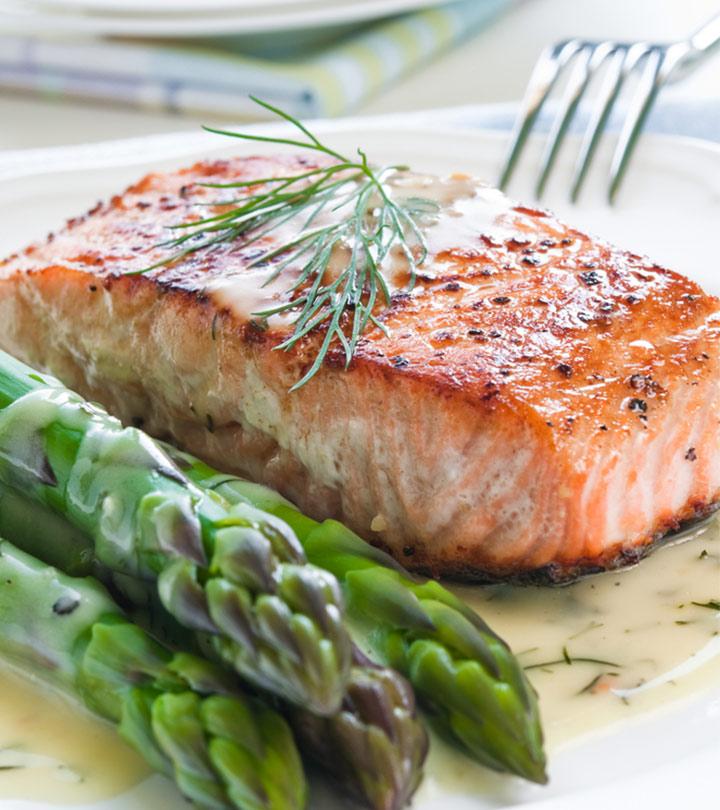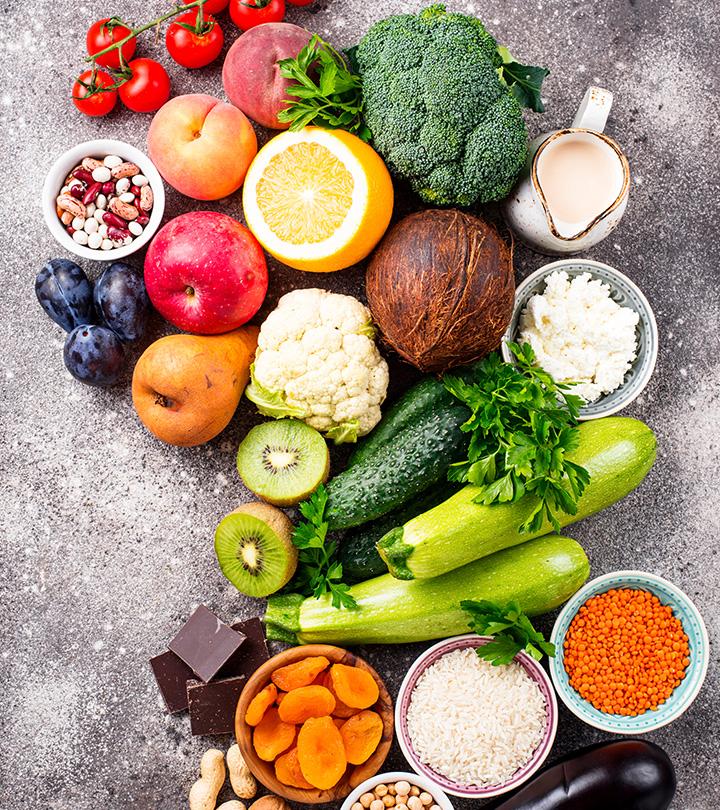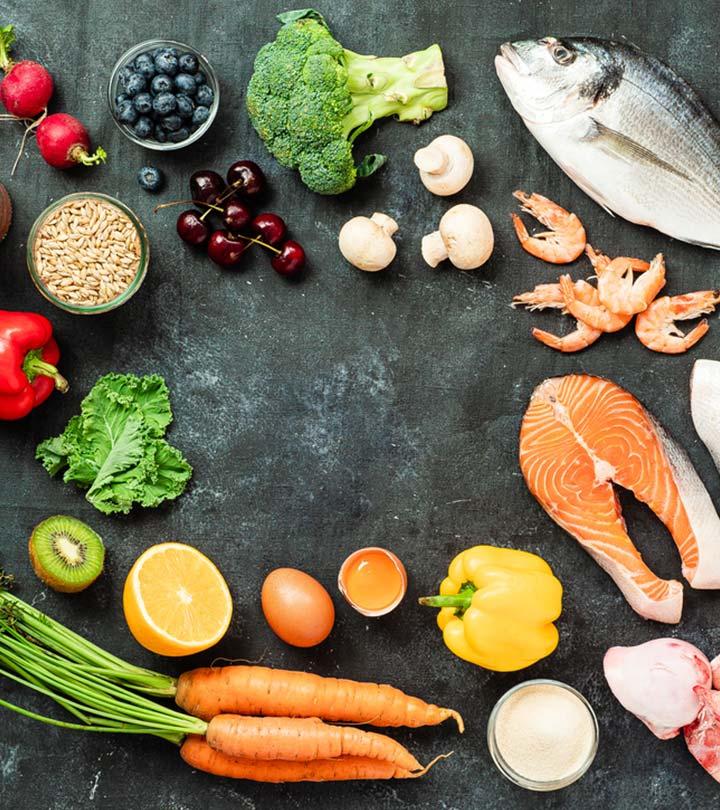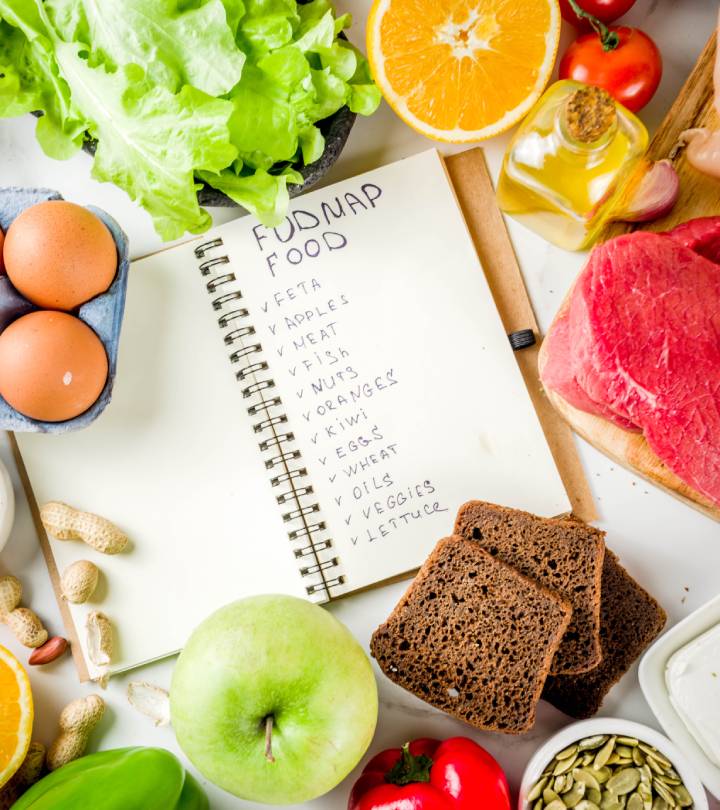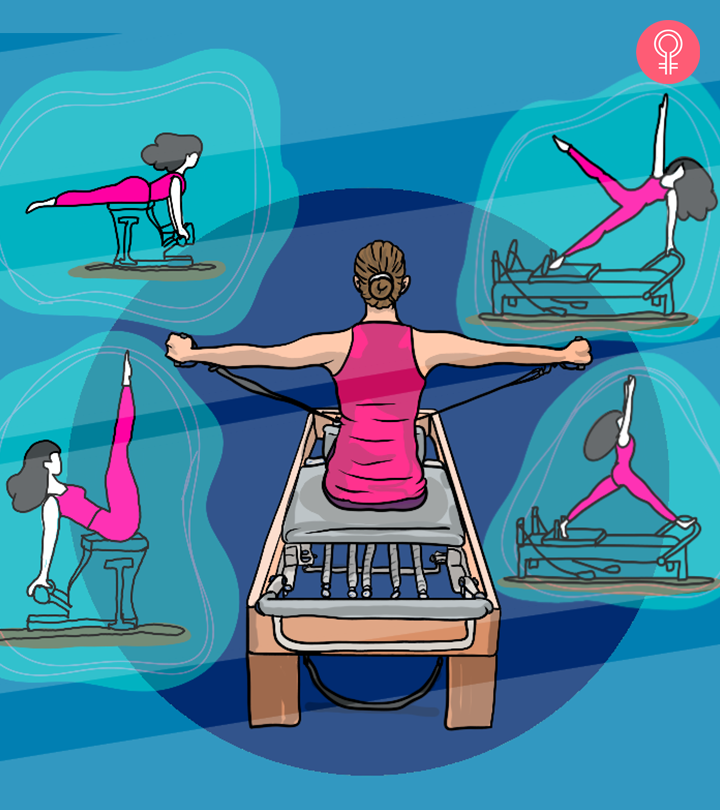CICO Diet Plan: How It Works, Foods List, Benefits, & Risks
Shed those extra pounds and regulate blood sugar levels with this simple diet.
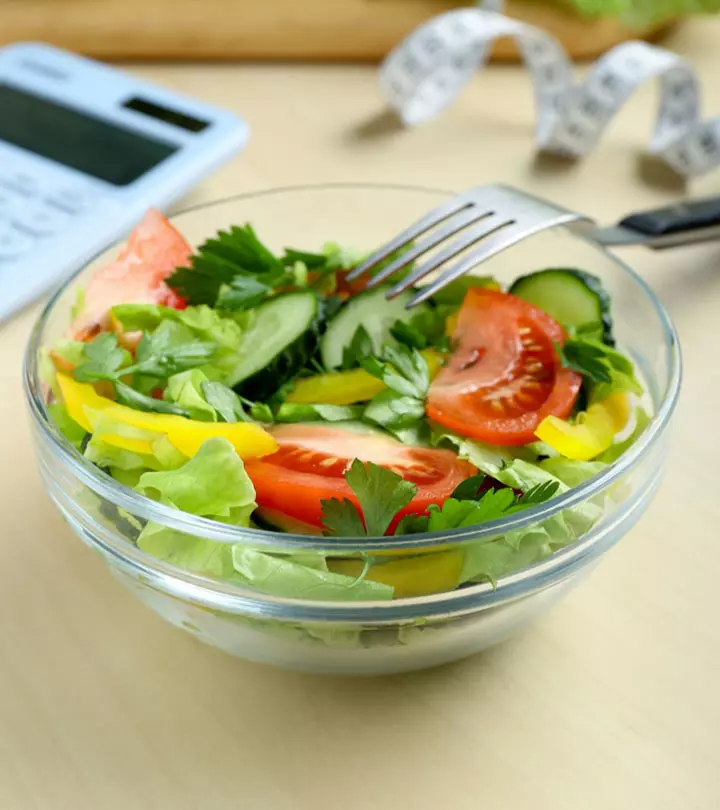
Image: Shutterstock
Say goodbye to those cheat days and learn to achieve your weight loss goals even as you eat all your favorite foods every day with the CICO diet. This weight loss diet works on the principle of energy balance. In simple terms, “eat less, move more.” As it turns out, this diet is a simple solution to tackling obesity. But does this popular and flexible diet actually live up to its hype? Scroll down to learn more about how the CICO diet works, its potential benefits, associated risks, a sample diet plan, and who should avoid it completely. Read on!
 At A Glance: CICO Diet
At A Glance: CICO Diet- Principle: Regular calorie counting to ensure the number of calories consumed is lower than those burned
- Purpose: To promote weight loss by creating a calorie deficit
- Who It Is For: Individuals trying to lose weight
- Duration: Short-term
- Who Should Avoid: People with (a history of) eating disorders, and pregnant or breastfeeding individuals
- Cons: May cause an increased risk of malnutrition, hypertension, irritable bowel syndrome, adolescent asthma, and type 2 diabetes
In This Article
What Is The CICO Diet?
Short for “Calories In, Calories Out”, the CICO diet is a weight-loss strategy that focuses on creating a balance between the calories one eats and the calories one burns. The goal of this diet is to burn more calories than what is consumed. As a result, the body burns the stored fat for extra energy and results in weight loss.
 Quick Tip
Quick TipBut how does this diet plan work to aid in weight loss? Take a deeper look at how the CICO diet works to understand more.
How Does The CICO Diet Work?
The CICO diet works by creating a calorie deficit, which requires you to know your body’s energy needs. Start by calculating your basal metabolic rate (BMR) or the number of calories your body burns when at rest. It is easy to create a calorie deficit once you know how many calories your body needs.
Studies suggest that the body should burn 3500 calories per week to shed one pound of fat. So, if you eat 2000 calories and burn 2500 calories, this will lead to a total loss of 500 calories per day. If this is done consistently, you will burn 3500 calories and 1 pound of fat per week (1). But can a low-calorie diet like this help you lose that stubborn weight? Scroll down to know!
Can CICO Diet Promote Weight Loss?
According to a study published in the New England Journal of Medicine, diets that involve reducing your daily calorie intake lead to weight loss (2). In addition, you can create a calorie deficit by burning more calories through increased physical activity or consuming fewer calories (3).
Mike Bechtel, a blogger, shares the insights he gained over 90 days about weight management. Concerned about health and inspired by data-driven approaches, he delves into the CICO concept, highlighting the impact of diet on weight loss. He says, “CICO as a weight/fat management strategy works, and works predictably. It’s not about diet or exercise fads. Rather, just like personal finance, it’s about sensible, sustainable thrift: Habits, tracking, and room for the occasional splurge (i).”
While the CICO diet plays an effective role in weight loss, how does it benefit the body in other ways? Find out in the next section.
Potential Benefits Of The CICO Diet
If you are overweight, the CICO diet can help; losing a small amount of your body weight can have the following positive effects on your health:
- In a study conducted on seventy-two obese individuals with type-2 diabetes, losing 10 percent of body weight resulted in significant reductions in blood glucose levels (4).
- Weight loss reduces knee-joint pain in overweight and obese individuals with knee osteoarthritisi A degenerative joint disease where the knee cartilage breaks down, resulting in pain, swelling, and stiffness. (5).
- Such weight loss may also improve the symptoms of obstructive sleep apnea and cardiovascular risk factors(6), (7).
- The CICO diet is easy-to-follow and flexible that allows you to eat whatever you want and can easily fit into your daily routine.
- Unlike other popular diets, the CICO diet has no food restrictions. On the contrary, avoiding specific foods while dieting can actually increase your desire for those foods (8).
The CICO diet is only concerned with reducing the number of calories you consume. It doesn’t take the body’s nutritional needs into account. Does this pose any risk to the body of becoming nutrition-deficit? Scroll down to know in the next section.
Risks Associated With The CICO Diet
This weight loss diet fails to recognize the importance of nutrient-dense foods beyond their calorie content. You can still maintain a calorie deficit by eating ultra-processed or junk food. But is it the best diet to help you shed some pounds in the long run?
The answer is absolutely not. Consuming foods devoid of vital vitamins and minerals can do you more harm than good. Following are the reasons this calorie-restrictive diet may cause side effects:
- The CICO diet mainly focuses on limiting calorie intake rather than building healthy eating patterns. So, returning to your regular diet may result in weight gain. However, more studies are warranted to support this claim.
- The CICO diet may also revolve around fast food or nutrient-poor choices that may increase the risk of malnutrition.
- Studies suggest that a diet high in ultra-processed foods may increase the risk of hypertensioni A chronic medical condition in which blood pressure in the arteries is higher than normal and leads to fatigue and anxiety. , irritable bowel syndromei A common intestinal disorder that affects the digestive system and causes pain, diarrhea, and constipation. , adolescent asthma, and type-2 diabetes(9), (10).
- The constant focus on calorie counting can lead to disordered eating or an unhealthy preoccupation with food and weight.
So, it is important to note that the CICO diet can only be effective for weight loss in the short run. It may help you achieve your short-term weight loss goals. But how do you start? Keep scrolling to know more.
How To Start The CICO Diet
Step 1: Determine how many calories you need to consume to achieve your weight loss goal. You can use calorie or CICO calculators to determine your daily calorie needs.
Step 2: Start creating a calorie deficit by reducing portions, consuming low-calorie foods, and increasing physical activity.
Step 3: Track what you eat to stay on track. You can use various apps and websites to track your daily calorie count.
Step 4: Be consistent with your calorie deficit over time rather than trying to create a huge deficit.
Step 5: Use a weighing machine to monitor your progress every week or two.
Step 6: Consult with a health care professional or a registered dietitian before starting the CICO diet. They can help you determine an appropriate calorie goal, create a balanced diet plan, and address any concerns.
This is how you can successfully start this diet to achieve your weight loss goal. Planning your meals according to your calorie requirements makes the whole process more effective. The following sample diet menus can give you an idea.
Monitoring calorie intake and expenditure is crucial to maintaining a calorie deficit. In addition, very low-calorie diets (VLCDs) require strict medical supervision to reduce the risk of adverse effects. Here are a few sample CICO diet plans you can take a look at.
1000-Calorie Meal Plan
This meal plan limits your daily calorie intake to 1000 calories. So, this diet plan should not be followed without your doctor’s approval. Here is a sample meal plan you can follow.
| Breakfast | Bagel with cream cheese (315 calories) |
| Lunch | Lime chicken salad (242 calories) |
| Snacks | 24 almonds (164 calories) |
| Dinner | Bachelor brussels sprouts (313 calories) |
1500-Calorie Diet Plan
This meal plan restricts your calorie consumption to 1500 calories. Here is a sample of a one-day 1500-calorie meal plan.
| Breakfast | A cup of green tea (2 calories) and avocado and arugula omelet (344 calories) |
| Morning Snack | 1 medium-sized apple sprinkled with cinnamon (94 calories) |
| Lunch | Roasted veggie mason jar salad (400 calories) |
| Afternoon Snack | 1 cup of cucumber slices with hummus (145 calories) |
| Dinner | 2 cups of mixed green veggies (18 calories) and zucchini noodles with avocado pesto and shrimp (447 calories) |
1800-Calorie Diet Plan
This diet plan restricts your calorie intake to 1800 calories. Here is a sample of a one-day 1800-calorie meal plan.
| Breakfast | Strawberry mango shake and an ounce of pecans (304 calories) |
| Lunch | Mango strawberry arugula salad (448 calories) |
| Snacks | 2 oz. cheddar cheese (230 calories) |
| Dinner | Chicken with chipotle gravy (506 calories) |
These are some sample CICO diet plans you can experiment with on a daily basis. Scroll down to the next section to take a look at some quick and delicious CICO diet recipes you can incorporate into your daily routine.
CICO Diet Recipes
1. Avocado And Arugula Omelet
Ingredients
- 2 eggs
- 2 teaspoons of extra-virgin olive oil
- ½ cup of arugula
- ¼ diced avocado
- 1 teaspoon of low-fat milk
- ⅛ teaspoon of salt, divided
- 1 teaspoon of lemon juice
- 2 tablespoons of plain whole-milk Greek yogurt
Instructions
- Beat the eggs in a small bowl with milk and a pinch of salt.
- Heat 1 teaspoon of extra-virgin olive oil in a nonstick skillet over medium heat.
- Add the egg and salt mixture to the skillet and cook for 1 to 2 minutes or till the bottom is set.
- Flip the omelet over and cook for 30 seconds or till set.
- Transfer it to the plate.
- Toss the arugula with the remaining teaspoon of olive oil and lemon juice in a small bowl.
- Top the omelet with avocado, yogurt, arugula, and a pinch of salt.
 Quick Tip
Quick Tip2. Bachelor Brussels Sprouts
Ingredients
- 2 cups of Brussels sprouts
- ⅓ teaspoon of salt
- ½ teaspoon of pepper
- 2 tablespoons of coconut oil
Instructions
- Wash the Brussels sprouts, cut them in half lengthwise, and remove the stems.
- Heat coconut oil in a frying pan on medium flame.
- Add the sprouts and allow them to cook until slightly charred on the edges.
- Allow to cool and serve.
3. Chicken With Chipotle Gravy
Ingredients
- 4 chicken breasts
- 17 oz. can of chipotle peppers in adobo sauce
- 1 tablespoon of garlic
- 1 tablespoon of coconut oil
- 3 tablespoons of honey
- 1 onion
Instructions
- Add garlic, onions, honey, and chipotle peppers along with their sauce to a blender.
- Blend until all the ingredients are fully combined and have become a smooth mixture.
- Warm the coconut oil in the pan.
- Add the chicken breasts and the smooth mixture to the pan.
- Simmer each side on medium-low heat for about 7 minutes or until it is no longer pink in the middle.
- Serve with spinach and cauliflower.
While the CICO diet does not restrict any specific food groups, including nutrient-dense foods can always help in the long run. Scroll down to take a look at some of the healthy foods you can consume on a CICO diet.
CICO Diet Foods List
Here are some nutrient-dense foods with low calories you can include in your diet.
- Healthy Fats – Nuts, olive oil, and avocados
- Whole Grains – Brown rice, whole wheat bread, oats, and quinoa
- Fruits – Apple, pear, guava, and strawberries
- Vegetables – Arugula, beets, iceberg lettuce, and celery
- Lean Proteins– Tofu, chicken, legumes, and fish
Note: Low-calorie foods are not always healthy. It is important to consider the food’s quality and macro- and micronutrient content before including it in your diet.
There are a few foods one must limit or avoid while on a CICO diet. Check out the section below to know what they are.
Foods To Avoid On CICO Diet
- Sugary Snacks: Candies, pastries, sweetened beverages
- High-Fat Junk Food: Deep-fried items, chips, excessive cheese
- Sugary Beverages: Sodas, energy drinks, fruit juices
- Highly Processed Foods: Heavily processed snacks, meals with hidden calories
- Extra Sauces And Condiments: Mayonnaise, creamy salad dressings
- High-Calorie Alcoholic Drinks: Cocktails, beer
- Nuts And Seeds: In large quantities
- Full-Fat Dairy: Whole milk, fatty cheeses
- Sugary Cereals: Cereals with added sugar
Additionally, you need to avoid eating big portions of any food when you are on the CICO diet.
However, while the CICO diet benefits the body in various ways, it may not be suitable for everyone and should be avoided by certain people. Scroll down to the next section to know more.
Who Should Not Follow The CICO Diet
- Individuals with eating disorders, as strict calorie counting may lead to unhealthy eating habits.
- Pregnant and lactating women, as going on a weight loss diet may have a negative effect on the baby’s growth.
- Children, as they have specific nutritional needs that cannot be met by creating a calorie deficit.
Infographic: The Benefits And Risks Of The CICO Diet
The CICO diet is a popular weight loss diet that works by creating a calorie deficit. This helps in improving your blood sugar levels and overall health. However, without proper medical supervision, the diet may lead to adverse effects. We have rounded up the benefits and risks associated with this diet in the infographic below. Scroll down to know more!

Illustration: StyleCraze Design Team
Conclusion
CICO diet (calorie-controlled diet) is an easy-to-follow diet that has been around for a while. It aids in weight loss, improves cardiovascular health, and is known for its simplicity and flexibility. However, focusing exclusively on caloric intake may not be sustainable and can lead to adverse effects like nutritional deficiencies and unhealthy eating habits. Couple it with proper exercise, and a healthy lifestyle for overall health and wellness. It is also important to consult your nutritionist before you start this diet.
Frequently Asked Questions
Is the CICO diet healthy?
Yes, the CICO diet is a good way to achieve your short-term weight loss goals. However, it is best to consult your dietitian before switching to this diet to avoid adverse effects.
Is a CICO diet better than keto?
Anecdotal evidence suggests that the CICO diet is better than keto. Staying calorie deficit and losing weight is much easier than constantly maintaining a low-carb diet and watching out for calorie intake on keto. However, more research is warranted in this regard.
Does CICO slow metabolism?
Yes, calorie-restricted diets like CICO can slow down your metabolism and cause muscle loss. This makes it more difficult to maintain your weight loss in the long run (11), (12).
Key Takeaways
- The CICO diet is a weight loss diet that focuses on creating a calorie deficit by consuming fewer calories than the body burns.
- This easy-to-follow diet helps regulate blood sugar levels and improves the symptoms of obstructive sleep apneai A disorder caused by the repetitive collapse of the upper airway during sleep, resulting in snoring, snorting, or gasping. and cardiovascular diseases.
- Restricting calorie intake may cause nutritional deficiencies, and eating disorders and affect your overall fitness if you are not careful about what you are consuming.
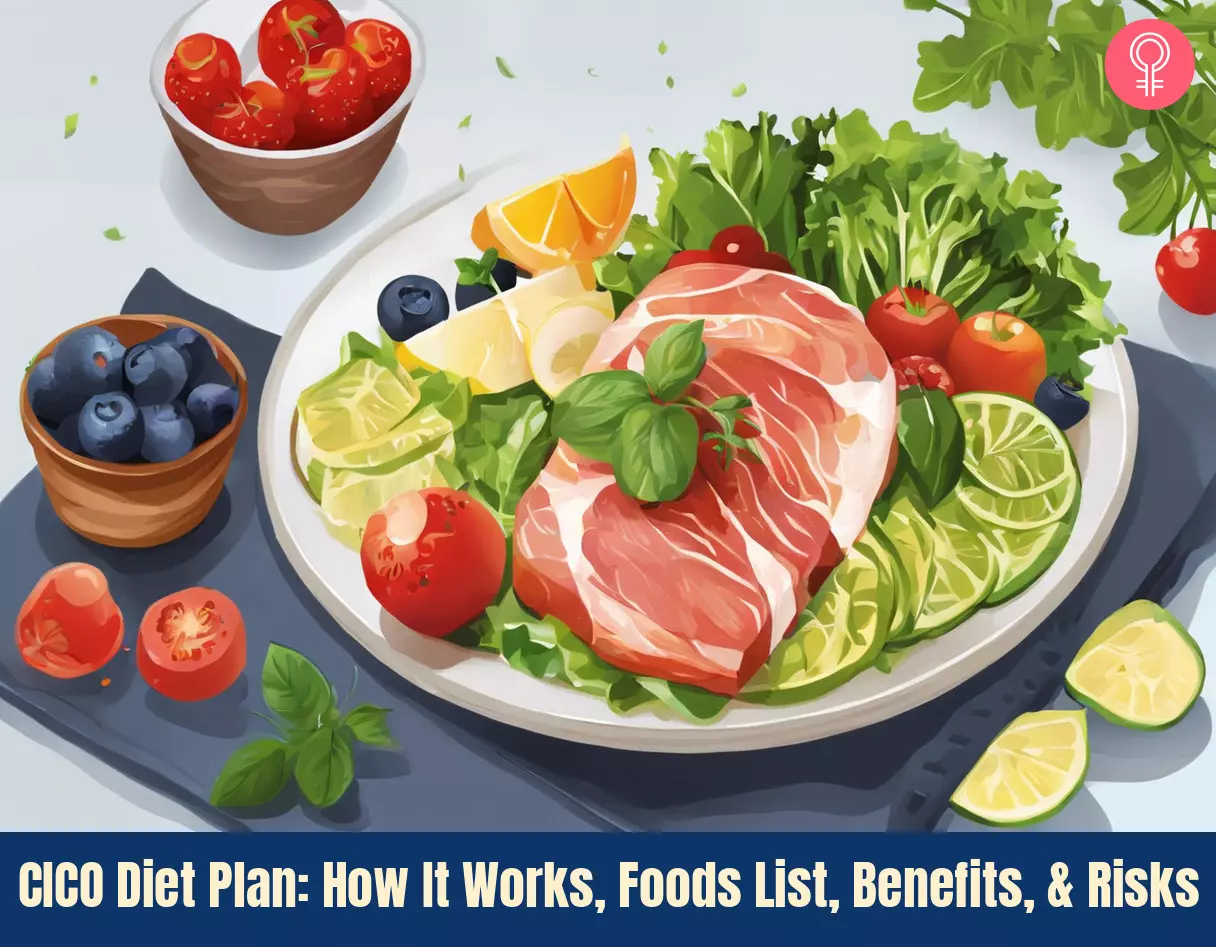
Image: Stable Diffusion/StyleCraze Design Team
Try the CICO diet to shed those stubborn pounds easily without exercise. Check out this video for tips on simple dietary changes for effective weight loss.
Personal Experience: Source
StyleCraze's articles are interwoven with authentic personal narratives that provide depth and resonance to our content. Below are the sources of the personal accounts referenced in this article.
i. CICO: My Experience with a “Less is More” Weight Management Strategy.https://mikebechtel.medium.com/using-quantified-self-to-reduce-the-quantity-of-self-774001e9bca6
References
Articles on StyleCraze are backed by verified information from peer-reviewed and academic research papers, reputed organizations, research institutions, and medical associations to ensure accuracy and relevance. Read our editorial policy to learn more.
- What is the Required Energy Deficit per unit Weight Loss?
https://www.ncbi.nlm.nih.gov/pmc/articles/PMC2376744/ - Comparison of Weight-Loss Diets with Different Compositions of Fat Protein and Carbohydrates
https://www.nejm.org/doi/pdf/10.1056/NEJMoa0804748 - Caloric Restriction with or without Exercise: The Fitness vs. Fatness Debate
https://www.ncbi.nlm.nih.gov/pmc/articles/PMC2806223/ - Association between glycosylated hemoglobin and intentional weight loss in overweight and obese patients with type 2 diabetes mellitus: a retrospective cohort study
https://pubmed.ncbi.nlm.nih.gov/22508341/ - Weight loss reduces knee-joint loads in overweight and obese older adults with knee osteoarthritis
https://pubmed.ncbi.nlm.nih.gov/15986358/ - The impact of weight reduction in the prevention of the progression of obstructive sleep apnea: an explanatory analysis of a 5-year observational follow-up trial
https://pubmed.ncbi.nlm.nih.gov/24560188/ - Benefits of Modest Weight Loss in Improving Cardiovascular Risk Factors in Overweight and Obese Individuals With Type 2 Diabetes
https://www.ncbi.nlm.nih.gov/pmc/articles/PMC3120182/ - Food Addiction Beliefs Amongst the Lay Public: What Are the Consequences for Eating Behaviour?
https://link.springer.com/article/10.1007/s40429-017-0136-0 - Consumption of ultra-processed foods and health outcomes: a systematic review of epidemiological studies
https://pubmed.ncbi.nlm.nih.gov/32819372/ - Ultraprocessed Food Consumption and Risk of Type 2 Diabetes Among Participants of the NutriNet-Santé Prospective Cohort
https://pubmed.ncbi.nlm.nih.gov/31841598/ - Metabolic adaptation to weight loss: implications for the athlete
https://www.ncbi.nlm.nih.gov/pmc/articles/PMC3943438/ - Changes in energy expenditure resulting from altered body weight
https://pubmed.ncbi.nlm.nih.gov/7632212/ - Dietary Protein and Muscle Mass: Translating Science to Application and Health Benefit
https://www.ncbi.nlm.nih.gov/pmc/articles/PMC6566799/
Read full bio of Olesya Wilson
Read full bio of Ravi Teja Tadimalla
Read full bio of Aparna Mallampalli









